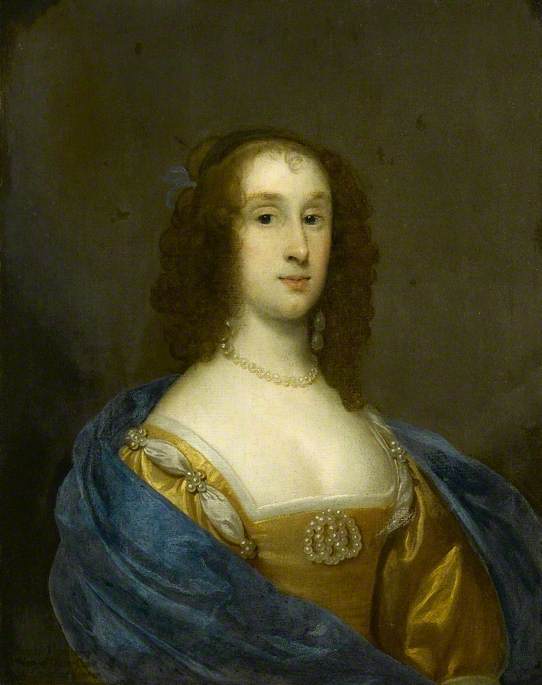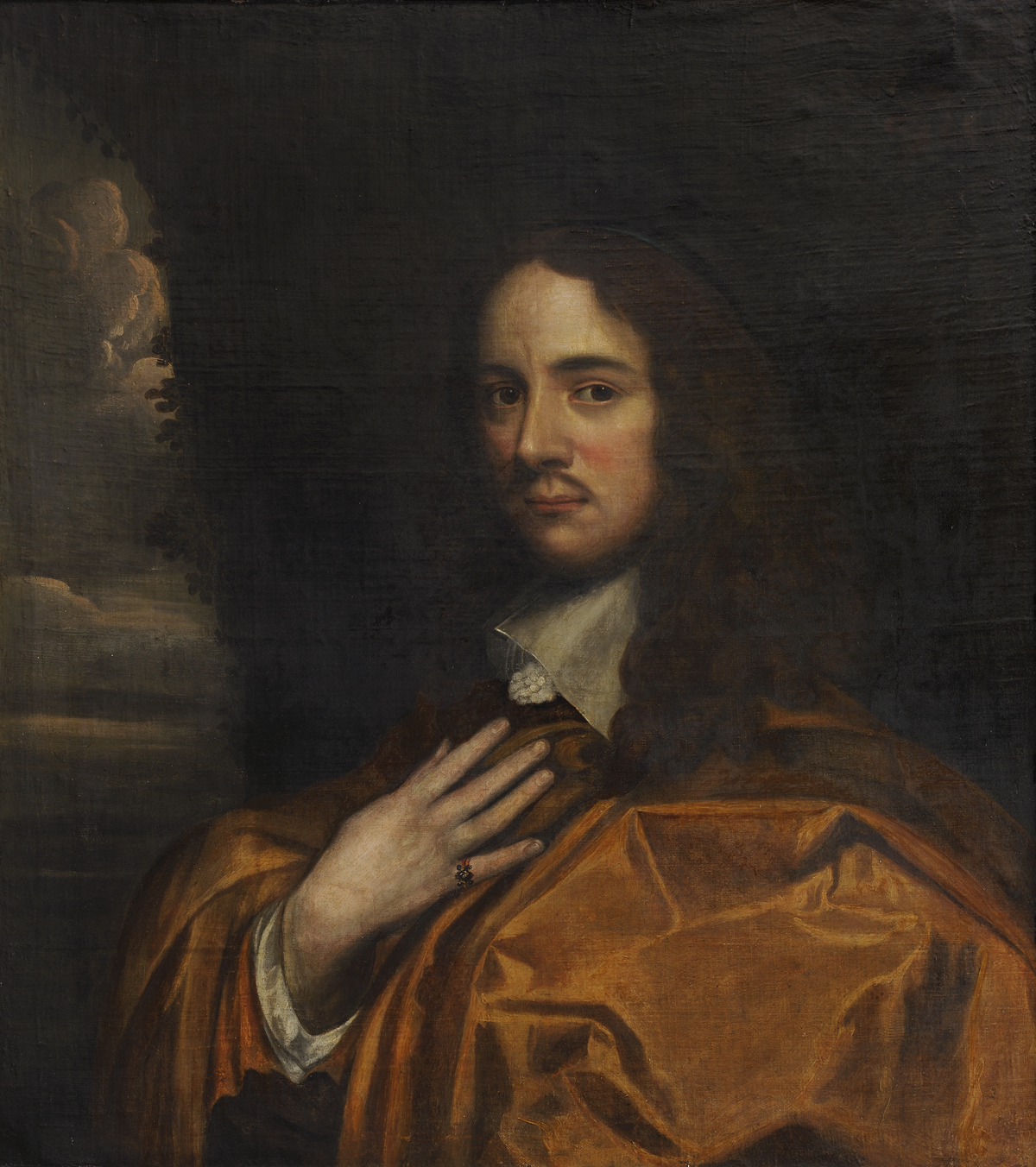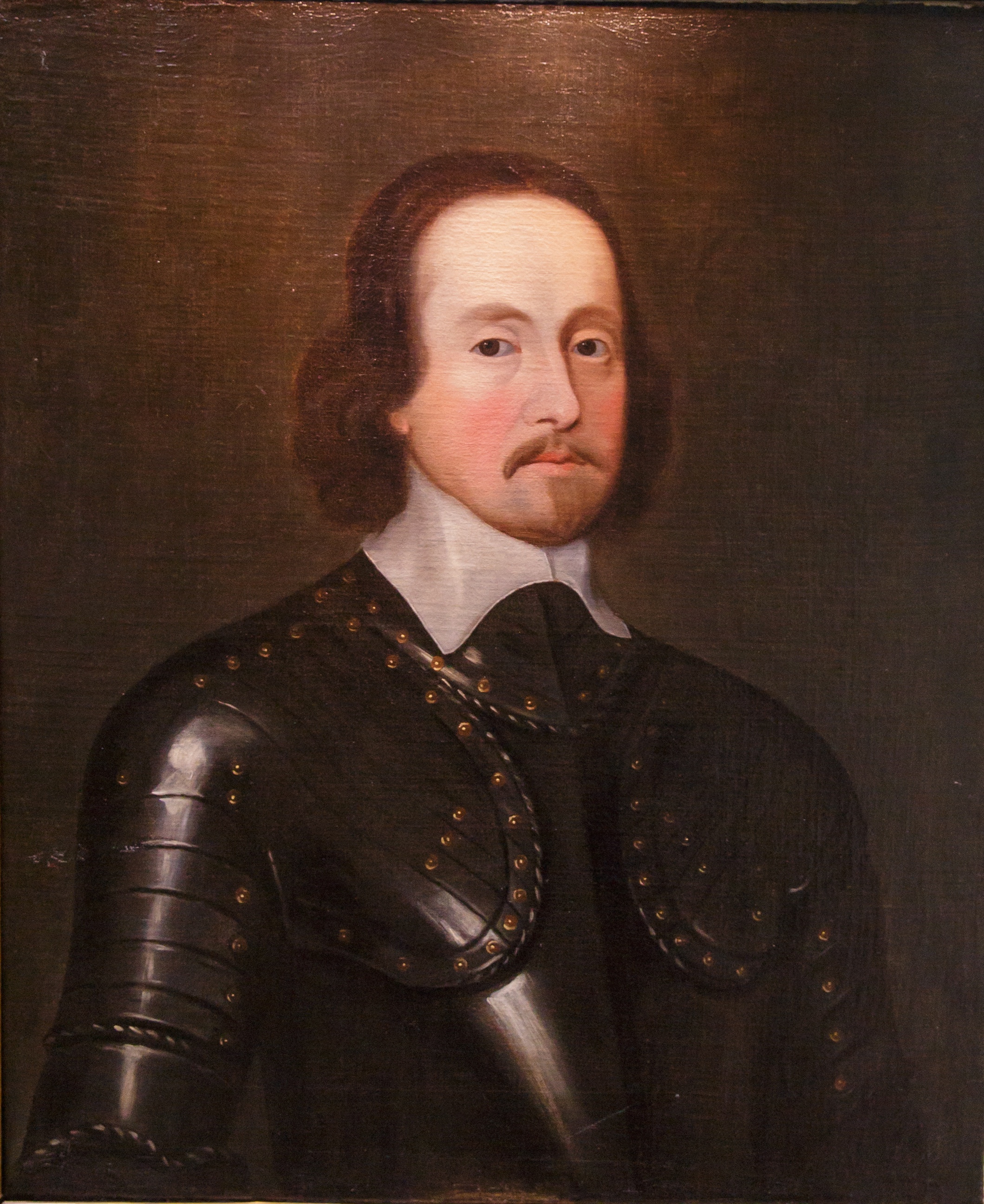|
1650 In Ireland
Events from the year 1650 in Ireland. Events *March 27 – Confederate Ireland's besieged capital Kilkenny is surrendered to Cromwell. *April 27 – Cromwellian conquest of Ireland: Oliver Cromwell joins the siege of Clonmel in person. *May 1 – Charles II repudiates his alliance with Irish Catholics in favour of one with Scottish Covenanters in the Treaty of Breda. Most English Royalists in Ireland surrender to the Parliamentarians after this point. *May 10 – Battle of Macroom: Irish force defeated by English Parliamentarians. *May 17 – Siege of Clonmel: Cromwell's troops storm the walls, taking up to 2,500 casualties. Although they are unable to take the town by force, the garrison, without supplies, slips away under cover of darkness. *May 26 – Cromwell leaves Ireland from Youghal and passes his command to Henry Ireton. *June 19 – Battle of Tecroghan: an Irish force successfully relieves the siege of Tecroghan Castle in County Westmeath *June 21 – Battle of Scarrifh ... [...More Info...] [...Related Items...] OR: [Wikipedia] [Google] [Baidu] |
March 27
Events Pre-1600 *1309 – Pope Clement V imposes excommunication and Interdict (Catholic canon law), interdiction on Venice, and a general prohibition of all commercial intercourse with Venice, which had seized on Ferrara, a papal fiefdom. *1329 – Pope John XXII issues his ''In Agro Dominico'' condemning some writings of Meister Eckhart as heretical. *1513 – Spanish explorer Juan Ponce de LeĂłn reaches the northern end of The Bahamas on his first voyage to Florida. 1601–1900 *1625 – Charles I of England, Charles I becomes Monarchy of the United Kingdom, King of England, Scotland and Ireland as well as claiming the title English claims to the French throne, King of France. *1638 – The first of four destructive 1638 Calabrian earthquakes, Calabrian earthquakes strikes southern Italy. Measuring magnitude 6.8 and assigned a Modified Mercalli intensity scale, Mercalli intensity of XI, it kills 10,000–30,000 people. *1782 – The Second Rockingham m ... [...More Info...] [...Related Items...] OR: [Wikipedia] [Google] [Baidu] |
Henry Ireton
Henry Ireton ((baptised) 3 November 1611 – 26 November 1651) was an English general in the Parliamentarian army during the Wars of the Three Kingdoms, and the son-in-law of Oliver Cromwell. He died of disease outside Limerick in November 1651. Personal details Ireton was the eldest son of a German Ireton of Attenborough, Nottinghamshire, and was baptised in St Mary's Church on 3 November 1611. He became a gentleman commoner of Trinity College, Oxford, in 1626, graduated with a Bachelor of Arts in 1629, and entered the Middle Temple the same year. English Civil War On the outbreak of the First English Civil War, he joined the parliamentary army, fighting at the Battle of Edgehill in October 1642, and at the Battle of Gainsborough in July 1643. He was made deputy-governor of the Isle of Ely by Cromwell and served under Earl of Manchester in the Yorkshire campaign and at the second Battle of Newbury, afterwards supporting Cromwell in his accusations of incompetency against t ... [...More Info...] [...Related Items...] OR: [Wikipedia] [Google] [Baidu] |
Church Of Ireland
The Church of Ireland ( ga, Eaglais na hÉireann, ; sco, label= Ulster-Scots, Kirk o Airlann, ) is a Christian church in Ireland and an autonomous province of the Anglican Communion. It is organised on an all-Ireland basis and is the second largest Christian church on the island after the Roman Catholic Church. Like other Anglican churches, it has retained elements of pre-Reformation practice, notably its episcopal polity, while rejecting the primacy of the Pope. In theological and liturgical matters, it incorporates many principles of the Reformation, particularly those of the English Reformation, but self-identifies as being both Reformed and Catholic, in that it sees itself as the inheritor of a continuous tradition going back to the founding of Christianity in Ireland. As with other members of the global Anglican communion, individual parishes accommodate different approaches to the level of ritual and formality, variously referred to as High and Low Church. Overvie ... [...More Info...] [...Related Items...] OR: [Wikipedia] [Google] [Baidu] |
William King (archbishop)
William King (1 May 1650 – 8 May 1729) was an Anglican divine in the Church of Ireland, who was Archbishop of Dublin from 1703 to 1729. He was an author and supported the Glorious Revolution. He had considerable political influence in Ireland, including a veto on judicial appointments. Early life King was born in May 1650 in County Antrim, to James King and his wife; his parents were recent immigrants from Aberdeen. He was educated at The Royal School, Dungannon, County Tyrone, and thereafter at Trinity College Dublin, graduating BA on 23 February 1670 and MA in 1673. Career On 25 October 1671, King was ordained a deacon as chaplain to John Parker, Archbishop of Tuam, and on 14 July 1673 Parker gave him the prebend of Kilmainmore, County Mayo. King, who lived as part of Parker's household, was ordained a priest on 12 April 1674. His support of the Glorious Revolution in 1688 served to advance his position. He became Bishop of Derry in 1691. He was advanced to the posit ... [...More Info...] [...Related Items...] OR: [Wikipedia] [Google] [Baidu] |
Andrew Marvell
Andrew Marvell (; 31 March 1621 – 16 August 1678) was an English metaphysical poet, satirist and politician who sat in the House of Commons at various times between 1659 and 1678. During the Commonwealth period he was a colleague and friend of John Milton. His poems range from the love-song "To His Coy Mistress", to evocations of an aristocratic country house and garden in " Upon Appleton House" and " The Garden", the political address "An Horatian Ode upon Cromwell's Return from Ireland", and the later personal and political satires "Flecknoe" and "The Character of Holland". Early life Marvell was born in Winestead-in-Holderness, East Riding of Yorkshire, near the city of Kingston upon Hull. He was the son of a Church of England clergyman also named Andrew Marvell (often termed Marvell Senior). The family moved to Hull when his father was appointed Lecturer at Holy Trinity Church , and Marvell was educated at Hull Grammar School. Aged 13, Marvell attended Trinity C ... [...More Info...] [...Related Items...] OR: [Wikipedia] [Google] [Baidu] |
James Butler, 1st Duke Of Ormonde
Lieutenant-General James FitzThomas Butler, 1st Duke of Ormond, KG, PC (19 October 1610 – 21 July 1688), was a statesman and soldier, known as Earl of Ormond from 1634 to 1642 and Marquess of Ormond from 1642 to 1661. Following the failure of the senior line of the Butler family, he was the second representative of the Kilcash branch to inherit the earldom. His friend, the Earl of Strafford, secured his appointment as commander of the government army in Ireland. Following the outbreak of the Irish Rebellion of 1641, he led government forces against the Irish Catholic Confederation; when the First English Civil War began in August 1642, he supported the Royalists and in 1643 negotiated a ceasefire with the Confederation which allowed his troops to be transferred to England. Shortly before the Execution of Charles I in January 1649, he agreed the Second Ormonde Peace, an alliance between the Confederation and Royalist forces which fought against the Cromwellian conquest o ... [...More Info...] [...Related Items...] OR: [Wikipedia] [Google] [Baidu] |
Battle Of Meelick Island
The Battle of Meelick, County Galway, Meelick Island took place on Meelick Island in the River Shannon, on the border between Connacht and Leinster in Ireland on 25 October 1650. It was fought between the Confederate Ireland, Irish Confederates and the Commonwealth of England, English Parliamentarians during the Irish Confederate Wars. The battle occurred when an English force under Colonel Daniel Axtell attacked the Connacht Irish army led by the Ulick Burke, 1st Marquess of Clanricarde, Marquess of Clanricarde. The result was the rout of the Connacht army by Axtell's soldiers. Background The Parliamentarian capture of the Castle at Battle of Tecroghan, Tecroghan enabled the English to approach the borders of Connacht during the summer of 1650. This caused the Confederates into action pending the threat of invasion. Clanricarde was the leading Irish commander in the province and by August recognised as the de facto successor to Ormond as Lord-Lieutenant of Ireland. Cla ... [...More Info...] [...Related Items...] OR: [Wikipedia] [Google] [Baidu] |
October 25
Events Pre-1600 * 285 (or 286) – Execution of Saints Crispin and Crispinian during the reign of Diocletian, now the patron saints of leather workers, curriers, and shoemakers. * 473 – Emperor Leo I acclaims his grandson Leo II as ''Caesar'' of the East Roman Empire. * 1147 – Seljuk Turks defeat German crusaders under Conrad III at the Battle of Dorylaeum. * 1147 – ''Reconquista'': After a siege of four months, crusader knights reconquer Lisbon. * 1415 – Hundred Years' War: Henry V of England, with his lightly armoured infantry and archers, defeats the heavily armoured French cavalry in the Battle of Agincourt. 1601–1900 * 1616 – Dutch sea-captain Dirk Hartog makes the second recorded landfall by a European on Australian soil, at the later-named Dirk Hartog Island off the West Australian coast. *1747 – War of the Austrian Succession: A British fleet under Admiral Edward Hawke defeats the French at the Second Battle of Cape Fini ... [...More Info...] [...Related Items...] OR: [Wikipedia] [Google] [Baidu] |
Letterkenny
Letterkenny ( ga, Leitir Ceanainn , meaning 'hillside of the O'Cannons'), nicknamed 'the Cathedral Town', is the largest and most populous town in County Donegal, a county in Ulster, the northern province in Ireland. Letterkenny lies on the River Swilly in East Donegal in the north-west of Ulster, and has a population of 19,274. It is the 36th largest settlement in all of Ireland by population (placing it ahead of Sligo, Larne, Banbridge, Armagh and Killarney), and is the 15th largest settlement by population in the province of Ulster (most of which comprises the separate jurisdiction of modern-day Northern Ireland). Along with the nearby city of Derry, Letterkenny is considered a regional economic gateway for the north-west of Ireland. Letterkenny acts as an urban gateway to the Ulster ''Gaeltacht'', similar to Galway's relationship to the Connemara ''Gaeltacht''. Letterkenny began as a market town at the start of the 17th century, during the Plantation of Ulster. A castle ... [...More Info...] [...Related Items...] OR: [Wikipedia] [Google] [Baidu] |
Charles Coote, 1st Earl Of Mountrath
Charles Coote, 1st Earl of Mountrath (c. 1610 – 17 December 1661) was an Anglo-Irish peer, the son of Sir Charles Coote, 1st Baronet, and Dorothea Cuffe, the former being an English veteran of the Battle of Kinsale (1601) who subsequently settled in Ireland. Irish Rebellion and Civil War The younger Coote became an MP for Leitrim in the Irish Parliament between 1634 and 1635 and again in 1640, a year before the outbreak of the Irish rebellion of 1641. The elder Charles Coote was active in the suppression of the Irish insurgents in 1642, launching attacks on Clontarf and County Wicklow in late 1641 in which many civilians died; he was killed in action defending Trim in May 1642. After the death of his father, Charles Coote also led some of the King's forces under Ormonde against the Confederate army, but was captured defending a stronghold in the Curragh of Kildare by an Irish army led by Castlehaven. He was released during the 1643 cessation of arms. At this time Coot ... [...More Info...] [...Related Items...] OR: [Wikipedia] [Google] [Baidu] |
Battle Of Scarrifholis
The Battle of Scarrifholis, also spelt Scariffhollis was fought on 21 June 1650, near Letterkenny in County Donegal during the Cromwellian conquest of Ireland. A force loyal to the Commonwealth of England commanded by Charles Coote defeated the Catholic Ulster Army, commanded by Heber MacMahon, Roman Catholic Bishop of Clogher. Although slightly fewer than their opponents, Coote's troops consisted largely of veterans from the New Model Army and had three times the number of cavalry. After an hour of fighting, the Ulster army collapsed and fled, losing most of its men, officers, weapons, and supplies. The battle secured the north of Ireland for the Commonwealth and cleared the way to complete the Cromwellian conquest of Ireland. Background The Irish Confederate Wars, sparked by the 1641 Rebellion, were initially fought between the predominantly Catholic Confederation, and a largely Protestant Irish Royal Army, led by Ormond. Both claimed to be loyal to Charles I, while th ... [...More Info...] [...Related Items...] OR: [Wikipedia] [Google] [Baidu] |
June 21
Events Pre-1600 * 533 – A Byzantine expeditionary fleet under Belisarius sails from Constantinople to attack the Vandals in Africa, via Greece and Sicily (approximate date). * 1307 – KĂĽlĂĽg Khan is enthroned as Khagan of the Mongols and Wuzong of the Yuan. * 1529 – French forces are driven out of northern Italy by Spain at the Battle of Landriano during the War of the League of Cognac. * 1582 – Sengoku period: Oda Nobunaga, the most powerful of the Japanese ''daimyĹŤs'', is forced to commit suicide by his own general Akechi Mitsuhide. 1601–1900 *1621 – Execution of 27 Czech noblemen on the Old Town Square in Prague as a consequence of the Battle of White Mountain. * 1734 – In Montreal in New France, a slave known by the French name of Marie-Joseph AngĂ©lique is put to death, having been convicted of setting the fire that destroyed much of the city. * 1749 – Halifax, Nova Scotia, is founded. *1768 – James Otis Jr. offend ... [...More Info...] [...Related Items...] OR: [Wikipedia] [Google] [Baidu] |



.jpg)
